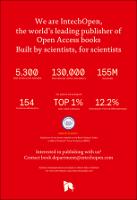Chapter Schistosomiasis: Setting Routes for Drug Discovery
Author(s)
Tavares, Naiara Clemente
Aguiar, Pedro Henrique Nascimento de
Gava, Sandra Grossi
Oliveira, Guilherme
Mourão, Marina Moraes
Language
EnglishAbstract
Air quality sampling campaigns in three European subway systems (Barcelona, Athens and Oporto) were conducted in order to characterise particulate matter (PM) to better understand the main factors controlling it. PM mass concentrations varied among the European subway platforms, and also within the same underground system, this being mainly associated to differences in the design of the stations and tunnels, system age, train frequency, ventilation and air‐conditioning systems, commuter's density, rails geometry and outdoor air quality. PM concentrations displayed clear diurnal patterns, depending largely on the operation and frequency of the trains and the ventilation system. Chemically, subway PM2.5 on the platforms consisted of iron, carbonaceous material, crustal matter, secondary inorganic compounds, insoluble sulphate, halite and trace elements. Fe was the most abundant element, accounting for 19–46% of the bulk PM2.5, which is generated mainly from mechanical wear at rail‐wheel‐brake interfaces. A source apportionment analysis allowed the identification of outdoor (sea salt, fuel‐oil combustion and secondary aerosol) and subway sources on platforms. The use of air‐conditioning inside the trains was an effective approach to reduce exposure concentrations, being more efficient removing coarser particles. PM concentrations inside the trains were greatly affected by the surrounding (i.e. platforms and tunnels) air quality conditions.
Keywords
metro, platforms, trains, subway aerosol, indoor air quality, exposure, commutingDOI
10.5772/65386Publisher
InTechOpenPublisher website
https://www.intechopen.com/Publication date and place
2016Classification
Transport technology & trades


 Download
Download